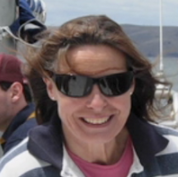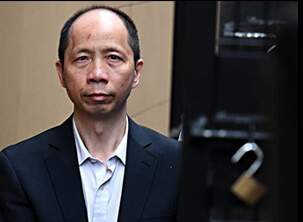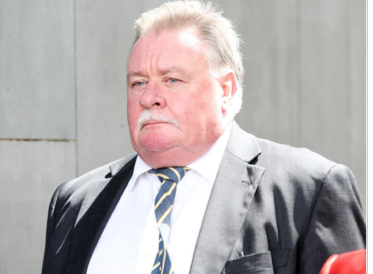Andrew L. Urban.
It’s a circumstantial case: a murder has been committed but police can find no primary evidence to identify and charge a suspect. It’s not a ‘Whodunnit?’ game, but the reality in not one but two unique murder cases, bizarrely enough in the same year, 2009, but states apart.
Just to put this essay in context, here is what the High Court said (in part) when overturning the conviction of Cardinal George Pell in April 2020: “The Court held that, on the assumption that the jury had assessed the complainant’s evidence as thoroughly credible and reliable, the evidence of the opportunity witnesses nonetheless required the jury, acting rationally, to have entertained a reasonable doubt as to the applicant’s guilt.” (emphasis added)
The equivalent observation in our two examples might read as follows: “The Court held that, on the assumption that the jury had assessed the prosecution’s evidence as thoroughly credible and reliable, the defence case nonetheless required the jury, acting rationally, to have entertained a reasonable doubt as to the accused’s guilt.”
In this ‘snapshot study’, the parallels found in the cases of Sue Neill-Fraser and Robert Xie, are extraordinary. They are accused (and convicted) of murders which have nothing in common – but the two crime profiles reveal striking parallels:
No evidence placing accused at crime scene at relevant time
No forensic evidence linking accused to crime
No murder weapon/s found
No eye witnesses
No credible motive
AND a reasonable alternative hypothesis consistent with the innocence of the accused
Surely such a crime profile would suggest an insurmountable hurdle to a conviction BEYOND REASONABLE DOUBT… should such cases have proceeded to trial? Probably not.
But a prosecutor might feel they can present their case so that it will entice the jury to convict – acting rationally or otherwise. Well, it has been done …. and it can be done. Why? Convictions are a key measure of prosecutorial career success, for one thing. (You might imagine other motivations…)
In my book Murder by the Prosecution (Wilkinson Publishing) I outline a template whereby prosecutors can overcome such high hurdles in circumstantial cases. Those same elements of the ‘template’ can be (and were) applied here in both the Sue Neill-Fraser and Robert Xie cases.
Neill-Fraser case

Sue Neill-Fraser
Hobart, Tasmania: Her partner Bob Chappell was missing from their yacht, Four Winds, on the morning after Australia Day 2009. His body has never been found. She was charged and convicted of his murder. (Decision on her second appeal, heard March 1 – 3, 2021, is pending.)
Xie case

Robert Xie
Sydney, NSW: Brutally murdered overnight on July 17 & 18, 2009 were North Epping newsagent Min Lin, 45, Mr Lin’s wife Yun Li “Lily” Lin, 44, their sons Henry, 12, and Terry, 9, and Mrs Lin’s sister, Yun Bin “Irene” Lin, 39. Their bodies were found by Robert Xie and Kathy Lin, sister of the murdered Min Lin; The two families lived 300 metres away. (His first appeal was dismissed on February 15, 2021; an appeal to the High Court is under consideration.)
HOW IT WORKS
Three imperatives to secure a conviction when there is no direct evidence of murder against the accused:
IMPERATIVE 1
Establish and/or embellish conflict between accused and victim and/or potential motive, however slight.
SUE NEILL-FRASER case

Tim Ellis SC, former Tasmanian DPP – prosecutor at trial
The prosecutor, Tim Ellis SC, put it to the jury that Neill-Fraser and her partner of 18 years, Bob Chappell, were in serious conflict and ready to break up, just a few weeks after jointly buying the $230,000 Four Winds yacht. He cited statements by strangers to the couple, the crew who helped them sail the Four Winds from its Queensland berth to its new home in Hobart. The notion of them being in conflict was disputed by witnesses who knew the couple over several years, including family friend of many years, Bob Martyn.
He also cited evidence about what may have been a quayside quarrel between them on the day of Chappell’s disappearance, which turned out to be false – but the jury wasn’t aware of that. The quarrel was in fact a disagreement between Chappell and his sister, who was visiting Hobart – and took place the day before.
ROBERT XIE case
April 5, 2012 – Justice Derek Price denies bail, but acknowledges a jury may find there is not enough evidence to convict Xie.
December 20, 2012 -Xie is granted bail by local court magistrate John Andrews, who says the Crown case is not strong. Andrews had noted that the prosecution had described the murder of Xie’s brother-in-law, Min ”Norman” Lin and four members of his family, bludgeoned and strangled in their beds, as a crime of extreme violence and personal hatred but was unable to establish a clear motive for the crimes. ”It was effectively conceded by the prosecutor that there was no evidence of motive.”
The prosecution had a challenge; motive is not a prerequisite for a conviction, but it helps. So the Crown case produced two motives: one was jealousy, that Robert’s brother in law was more successful than Robert (not true). The other was the preposterous notion that Robert butchered five members of his wife’s family so he could sexually molest his teenage niece. The girl’s presence in the case served more as something with which to smear Robert and destroy his character.
IMPERATIVE 2
Invent a scenario (speculate) describing the murder in detail, even if implausible. ‘Sell’ the story to the jury.
SUE NEILL-FRASER case
The prosecutor put it to the jury that Sue Neill-Fraser murdered Bob Chappell on board their new yacht possibly by hitting him on the head from behind with a wrench. NOTE: He did not present any evidence to support this speculation. Chappell was missing and his body was never found. In his closing address to the jury, he says: “She’s walking backwards and forwards and delivers blow – a blow or blows, or maybe stabs him with a screwdriver, I don’t know, he doesn’t look round, and so the body doesn’t have any marks of what you’d expect if someone had come down there, a stranger, intent on doing him harm, the body I suggest would have marks consistent only with being delivered by someone who he knew to be there, who he knew and expected to be behind him.” Ellis further speculated that she must have winched his body up to the top deck, heaved him over the side into their dinghy, rowed it away and dumped his body somewhere in the Derwent. NOTE: He did not present any evidence to support this speculation. (The jury was not too demanding of the Crown case…)
ROBERT XIE case

Tanya Smith SC
This was a huge challenge for the prosecution case. It was uncontested that Robert and his wife Kathy were at their computers on the night, until around 2am. Prosecutor Tanya Smith opened the Crown case saying: “The Crown does not know exactly what time it was that the murders occurred, but our case is that it must have occurred after 2 o’clock in the morning, because you will hear that it is accepted that the accused had been at home with his wife using the internet until around this time. So it is at some point after 2 o’clock and before 5.30am.” (Circular reasoning…case is built around Xie’s computer alibi; no evidence to show deaths occurred after 2 o’clock, but the prosecution didn’t make a fuss about that.)
The hurdle for the Crown case was that he was in his bed asleep after he shut his computer, and his wife agreed.
Ah, Xie must have sedated her, the police surmised. As a way to negate the alibi they enlisted an inmate to entrap Xie with covert recordings of hopefully incriminating conversations while Xie was on remand. The scratchy audio was played in court; it wasn’t very convincing (the judge wasn’t convinced) but it planted poison in the jury’s mind.
IMPERATIVE 3
Present any forensic and/or expert witness evidence angled to implicate the accused, playing on judge and jury ignorance about forensic and other technical or scientific matters.
SUE NEILL-FRASER case
The prosecutor distributed a photo to the jury which showed the Four Winds dinghy photographed with the extensive blue stain of luminol, a preliminary test for blood and many other substances. (The luminol test on the family car in the Lindy Chamberlain trial turned out to reveal sound deadener not blood.) There was no confirming test ever carried out on the dinghy. The projected slide was therefore meaningless, except it planted a prejudicial image in the minds of the jury.
At trial on October 13, 2010 during submissions prior to summing up, in the absence of the jury, counsel and the judge conferred. The prosecutor explained to defence and the judge (jury absent) that he never believed there was blood in the dinghy … obviously not, since it was his own hypothesis. The judge didn’t pass this on to the jury – they were left with the false impression that there was, indeed, Bob Chappell’s blood in the dinghy.
ROBERT XIE case
The Crown made much of what was designated Stain 91, a slight (2cm x 6mm) reddish-brown smear found on the garage floor at the Xie family home. The stain was found late in the investigation. An O-tol presumptive screening test gave a positive result indicating the possible presence of potato, paint, blood, rust or strawberry. A confirmatory test needed to be carried out back at the laboratory. A Luminol test across the entire garage floor the next day failed to detect the presence of blood. Back at the lab, the sample was found to be insufficient. There was only just enough material left to try for a DNA profile. A mixed profile was obtained, containing the DNA of at least four of the victims. Because the victims all came from the same family, it was not possible to rule out other members of the extended family from having also contributed.
Despite the undisputed fact that Xie had taken his son home, through the garage, after discovering the bodies, the Crown contended that the stain had been transferred from the (undiscovered) murder weapon to the garage floor the previous night. They further contended that Xie disposed of the weapon when he went to pick up the grandparents from Merrylands on the Saturday morning. To bolster their case, the Crown needed to show that Stain 91 was blood. This exercise consumed many weeks of the trial with American expert, Dr Perlin, guiding the jury through the science of Probabilistic Genotyping and the applications of his TrueAllele computer program. Wow, eh? Must be really important … um….”What is DNA?” the jury asked in a note to the judge.
***
The inescapable conclusion is that in these two cases the Crown secured a conviction – but not necessarily the truth. And we contend that the murderers in both cases are still at large.
FOOTNOTE:
This essay is not a comprehensive exploration of the two cases. For more details about both, please see our extensive menu of articles on the right hand side of the page.

ON 26/01/21, I commented on another article, and in part I wrote …
” As a refresher for readers, on 23 January 2015 then Premier Will Hodgman together with then Attorney-General, Vanessa Goodwin (now deceased) issued a statement. I note in particular, p3, reads,
“…Ensuring that the community has confidence in the Office of Director of Public Prosecutions is essential to ensuring that Tasmanians can have confidence in our criminal justice system. If confidence is eroded in the Office of the DPP, confidence in criminal justice system will be undermined. That is why it was so important to act and protect the integrity of the Office. …”
I write today, after the ETTER/SELBY PAPERS and the loud silence — where’s the rage?
I could go in hard now and make reference to witnesses in the street; or gossipers, whisperers.
But I will keep this for the Federal Royal Commission to Come, except to say;
Dried Flowers Aren’t Dead. This is a song title of mine; and it will blow your mind, so I can’t release it until after the Federal Royal Commission Tasmania.
Or, Tony Brownlee, “ It is not the best lawyer who wins the argument, but the best liar.”
Geoffrey Robertson QC.
The reality is jury members –
1) are not skilled at sorting the wheat from the chaff; prosecutors know that.
2) appear to swallow every story that is told. There may be a grain of truth somewhere in the prosecution’s narrative, yet jurors don’t seem to be able to ‘chew the meat and spit out the bones’; prosecutors know that too.
And, why would they, when citizens are indoctrinated to believe that integrity prevails and the Crown acts as a Model Litigant. Rubbish.
Nothing but an abuse of process. 😡
Thank you Geraldine, beautiful words in a grimy business.
Very nice parallels drawn Andrew between two very different cases, as you have done in Murder by the Prosecution. The case for restructuring murder trials indeed all trials by jury has never been clearer. Playing on the psychology of the jury is simply a game that is orthogonal to the truth, whereas inquisitorial trials explicitly try to determine the truth. We’ve been duped for centuries by this myth that trial by one’s peers is the way to go. The thinking of jurors is manipulated two highly paid orators whose aim is to see which holds the most sway. Sometimes the most convincing of the two is the one who presents the best evidence-based case, but you Andrew have shown case that where there is no evidence the prosecuting orator will simply make one up as did Ellis, and as was swallowed by Blow J and the jury. This is nothing short of evil.
Judges may not deliver ‘better’ (more accurate, as in trustworthy) verdicts, but they have to provide reasons. Juries are forbidden to…
Andrew interesting POST! How could it happen? Bottom line Murderers still at large! Conviction obtained without evidence or cause? Question is what and why was this a happening in the name of “Justice”? Mounting case in-bounds tightened lack of evidence without credence of any sort.. Knowingly; such truths should now free those innocent of any crime so harmed by in-justice! Understanding they have been maliciously prosecuted! Incarcerated into and stripped of all human rights in prison. In Susan Neil-Frasers damnation the Tasmanian Police – DPP(S) leading the Justice Department – The Judiciary – and too many Tasmanian Politicians colluding and covering the wrongness of a wilful perversion of justice. Enough! “George Orwell said; useful lies were preferred to harmful truths” The deviousness we as a society can ill afford!
In Tasmania, the almost automatic launching of a level of bias by the crown against an accused is an inevitable beginning in many differing alleged criminal cases.
My question is why is this so?
Why is this peculiar to Tasmania?
Is it that pomp and haughtiness have arisen almost immediately as an attitudinal mindset held by the State’s Judiciary and this State’s Justice Department?
I believe it is.
I think it goes back to the ‘Tasmanian cringe’ about having a convict in your family tree. In NSW it is a bit of a badge of pride, but Tassie is still remembered as the penal colony, where all the worst crooks were sent, so maybe cases start out in the courts with a bit of readiness to believe the prosecutor—who wouldn’t fabricate anything, would he/she?—over the alleged crook. Just speculating …
In answer, it is the same old line: In australia one gets as much justice as one can afford!
In Robert Xie’s case:
– for the first three trials, Xie could afford to pay a good barrister named Graham Turnbull who achieved two aborted trials and one hung jury, i.e. three “no results”. Keep in mind that the prosecutor Mark Tedeschi appears never to have lost a jury trial in about three decades of prosecuting, so a “no result” is about as good a result as a defence barrister can get. The equivalent of playing Magnus Carlsen at chess.
– for the fourth trial, Xie had run out of money, so the barrister provided for him was outgunned. Money talks.
Footnote: my point about Tedeschi never losing in front of a jury is not quite true. Tedeschi did lose one case in Fiji – the jury ruled in Tedeschi’s favour as usual, but the judge (from New Zealand) overruled the jury and reversed the decision, as the judge was entitled to do under Fiji law.